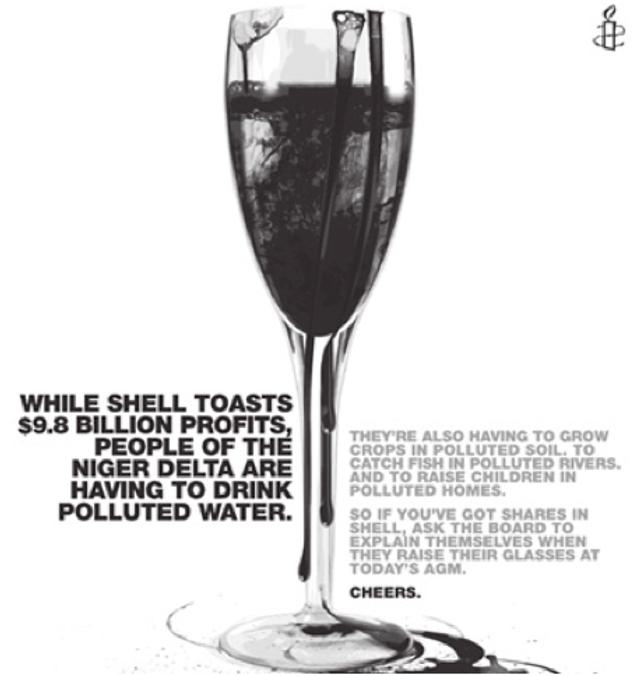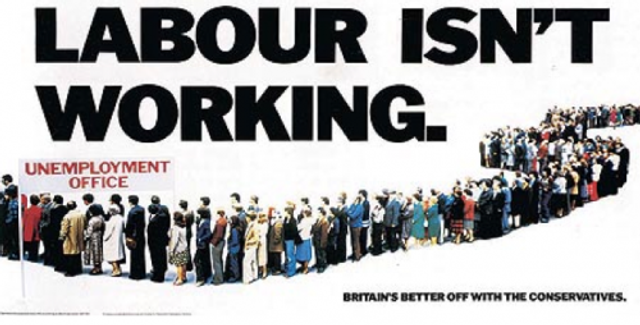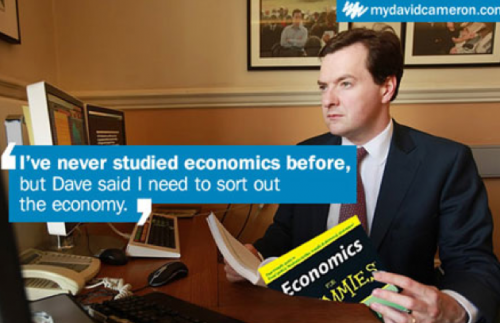What kind of advert would your supporters make, for you?
- Written by
- Aline Reed
- Added
- January 03, 2014
 View original image
View original image
On 18 May 2010 the annual general meeting of the oil company Shell took place in London. The shareholders who gathered that day were celebrating the company’s profit last year of $9.8 billion, but Amnesty International wanted to know at what cost. They were concerned that the balance sheet wouldn’t reflect the enormous losses faced by the men, women and children living in the Niger Delta. So Amnesty International came up with an advert. And they asked their supporters to pay to place it in the Financial Times, where Shell’s shareholders would see it on the day of the AGM.
The advert is shown opposite, in picture 1.
Word got around and, in just a few days, Amnesty International supporters new and old had chipped in enough money to place the advert. The only flaw in the plan was that the Financial Times refused to run the advert. Instead, it was printed in two free newspapers, the Metro and Evening Standard.
 View original image
View original image
So what does Amnesty’s campaign amount to? It’s a great example of ‘crowd-sourcing’, but is it anything more? Ultimately, the supporter is still being asked for money albeit in a more engaging way that usual. It would be a far braver charity that actually let go of the message and let its supporters write and design the advert itself, wouldn’t it?
Without doubt, it’s a suggestion that would send a shiver down the metaphoric spines of most fundraising and communications departments – let alone people like me who earn a living by creating adverts for charities. But the truth is, brands lost control of the message long ago and people are creating adverts of their own all the time.
For me, the power of those adverts was demonstrated during the UK’s general election of 2010. The campaigns created by agencies never seemed to achieve an ad that stood out like Labour isn’t working (1979 Saatchi and Saatchi), Labour’s tax bombshell (1992 M and C Saatchi) or demon eyes (1997 M and C Saatchi). See pics 2 to 4.

Instead, agencies were reduced to trying to deliver an advert that couldn’t be relentlessly spoofed. They failed. And, up and down the country, people tried their hand at spoofing – or simply creating their own adverts. Here are a few favourites.

A dig at the young would-be Chancellor of the Exchequer, George Osborne. From www.mydavidcameron.com.

From the Guardian. A play on the Conservatives’ earlier classic.

From the Guardian. David Cameron morphs into Mrs Thatcher.
And here’s an advert created by a voter that puts all the party political broadcasts to shame.
Of course, spoofing adverts is nothing new, but the tools to do so are now at everyone’s fingertips, as well as – crucially – the means to circulate the work potentially to millions. And because the message spreads virally, there are no media costs and the audience is self-selecting.
No wonder that traditional advertising struggles to compete.
But what about all the knowledge that advertising professionals have? The finely honed brands, the ‘benefit’ of focus-group testing? Well – dare I say it? – these voter-generated adverts seem to be all the better for being free of all that. In fact, while searching for the words to explain why, I came across this quote, which says it all for me (and this guy never even saw the Internet!).
‘We are generally better persuaded by the reasons we discover ourselves than by those given to us by others’.—Blaise Pascal (1623-1662)
Adverts such as this – made by individuals rather than advertising professionals – make us feel like we are discovering for ourselves, rather than being ‘sold to’. They are more convincing as a result.
So how does all this apply to charities?
Well in many senses, we’re a step ahead. Donors are creating adverts for charities all the time when they’re publicising the fundraising events they hold. The poster opposite, in aid of The Prostate Cancer Charity, promotes a charity shave day.
Moving online, what is Just Giving (and other sites like theirs) if not a set of adverts created by an individual to tell others why they should donate? click on the Just Giving image opposite.
I’ve taken this example almost at random, pausing only to check it is one that lets genuine emotion and enthusiasm flow through in a way that adverts created by the ‘professionals’ often fail to do. It tells a personal and moving story.
So perhaps we should embrace the enthusiasm and drive that donors have for our causes and re-examine how brands are often used in our sector. Too often, they become a set of rules overseen by a brand dragon, sorry, guardian, which ultimately impede genuine communication. In an age when people can create their own ads for you – and you should be glad they want to – it’s pointless holding on to this rigid and dated views of brands.
If you want a glimpse of the benefits that come with letting go a little, you need look no further than the fabulous story of Greenpeace and their well-loved iconic whale, Mr Splashy Pants (view film clip opposite).
Mark Phillips drew my attention to this TED talk by Alex Ohanian, one of the founders of social news site Reddit. It will take you just three minutes to see how losing control of the message ultimately paid dividends for Greenpeace.
I’ll finish with a film I came across while working for the charity Médécins Sans Frontières (MSF). I found this interesting because I couldn’t – and still can’t – tell whether it was created by an MSF volunteer doctor off his or her own bat or by the organisation.
If you’ve come this far with me, you’ll realise that I think audience-generated content is a good thing. As US blogger Jeff Brooks puts it:
‘Your “look” is not your brand. What you do and who you are is your brand.’
In this film, the brand and the testimony of someone who is actually doing the work have the same values. The result is truly compelling and – whether it was made by the volunteer doctor or by a fundraising professional – it makes you want to give.
*If any of this seems familiar, this article for SOFII is a new and improved version of a post I put on the Bluefrog creative blog earlier in 2010.
© Aline Reed 2010.




















